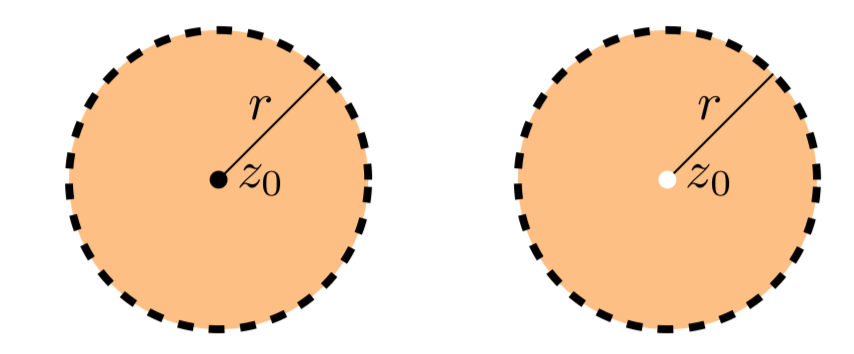2.2: Discos abiertos, discos eliminados abiertos y regiones abiertas
- Page ID
- 109688
El disco abierto de radio\(r\) alrededor\(z_0\) es el conjunto de puntos\(z\) con\(|z - z_0| < r\), es decir, todos los puntos dentro\(r\) de la distancia de\(z_0\).
El disco borrado abierto de radio\(r\) alrededor\(z_0\) es el conjunto de puntos\(z\) con\(0 < |z - z_0| < r\). Es decir, retiramos el\(z_0\) centro del disco abierto. Un disco eliminado también se llama disco perforado.

Izquierda: un disco abierto alrededor\(z_0\); derecha: un disco abierto eliminado alrededor\(z_0\)
Una región abierta en el plano complejo es un conjunto\(A\) con la propiedad en la que cada punto\(A\) puede estar rodeado por un disco abierto que se encuentra completamente en\(A\). A menudo dejaremos caer la palabra abierta y simplemente llamaremos a\(A\) una región.
En la siguiente figura,\(A\) el conjunto de la izquierda es una región abierta porque por cada punto en\(A\) podemos dibujar un pequeño círculo alrededor del punto que está completamente adentro\(A\). (La línea límite discontinua indica que el límite de\(A\) no forma parte de\(A\).) En contraste, el conjunto no\(B\) es una región abierta. Observe que el punto que\(z\) se muestra está en el límite, por lo que cada disco alrededor\(z\) contiene puntos fuera\(B\).


